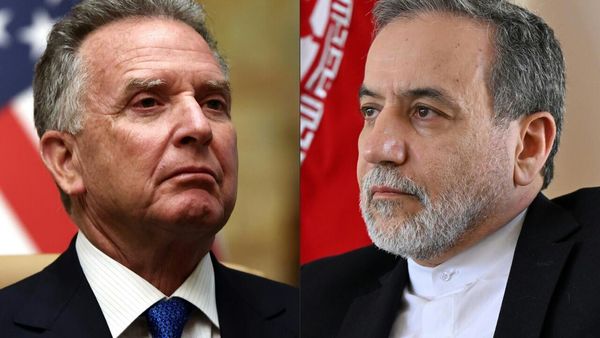
In a July 19, 2024, Barchart article I concluded:
The twenty-five-year bullish gold trend remains firmly intact as we head into the second half of 2024. The path of least resistance favors new all-time highs over the coming months as fundamental and technical factors present a compelling bullish case.
The nearby COMEX August gold futures contract was trading at the $2,405.90 per ounce level on July 19. In August, gold rose to a new high and was over the $2,530 level in early September. There are many ETF choices for market participants seeking gold exposure for portfolios. The Gold SPDR (GLD), the iShares Gold Trust (IAU), and the Granite Shares Gold Trust (BAR) are three gold ETFs that provide exposure to the precious yellow metal.
New highs in gold
In a bull market that is now twenty-five years old, gold continues to make new and higher highs.

The long-term chart highlights that gold has not traded below $1,000 since 2009, under $1,500 since 2020, and below $2,000 since February 2024. The continuous gold futures contract eclipsed the $2,500 per ounce level in August 2024.
De-dollarization is bullish for gold
In a watershed 2022 event, President Xi of China and Russian leader Vladimir Putin shook hands on a “no-limits” alliance. Russian troops invaded Ukraine less than one month later. U.S. and Western European sanctions on Russia caused Moscow to stabilize the economy through trade protocols with Beijing and other allies.
The U.S. dollar has been the world’s reserve currency over the past century, making the dollar the primary pricing mechanism for most commodities and cross-border transactions. The Chinese-Russian alliance and sanctions have caused a wave of international de-dollarization. As China, Russia, and their allies abandon the U.S. dollar for other payment vehicles, the dollar’s reserve currency role has diminished along with the effectiveness of sanctions. As the dollar’s role declines, gold’s value has increased, as gold is the world’s oldest means of exchange, and governments hold the precious metal as an integral part of foreign currency reserves. China and Russia are leading gold-producing countries.

As the chart illustrates, China was the leading gold-producing country in 2023, with Russia tied with Australia for second place. With around 3,000 tons of annual production, China and Russia are responsible for around 22.7% of the world’s yearly output.
Meanwhile, in another move to increase de-dollarization, Saudi Arabia abandoned a 50-year petrodollar protocol that prices its oil output in U.S. dollars. The Saudis have been selling China crude oil for yuan payment, while India has purchased the energy commodity using rupees. As Yogi Berra once said, the bottom line is, “The future (of the U.S. dollar) ain’t what it used to be.”
Central banks keep buying
Central banks own gold as a critical part of foreign currency reserves, validating gold’s role as a reserve asset. Since 2004, “The total quantity of gold held in central bank reserves has increased by almost 19% by weight.”
Meanwhile, the leading buyers have been Russia, China, India, and Turkey, the countries that are leading the de-dollarization. Moreover, since Russia and China are leading producers, they are likely vacuuming domestic production, increasing gold reserves even more than the official statistics show.
China and Russia have also been leading the development of a BRICS currency with some gold backing to challenge the dollar’s reserve currency position and offer an alternative to the U.S. currency.
If central banks, monetary authorities, and governments continue to build gold reserves, it will send a message to investors that gold should be an integral part of all investment portfolios.
Three ETF choices for gold exposure
The most direct route for gold investment is the physical market for bars and coins. Governments tend to own physical good London delivery 400-ounce bars, each worth $1 million at $2,500 per ounce. While there are many investment choices for individuals seeking gold exposure, the following three ETF products own physical gold bullion:
- GLD: The Gold SDPR is the most liquid gold ETF product. At $231.29 per share, GLD had nearly $69.290 billion in assets under management and trades an average of over 6.44 million shares daily. GLF charges a 0.40% management fee.
- IAU: At $47.28 per share, the iShares Gold Trust had over $29.67 billion in assets. IAU trades an average of over 6.8 million shares daily and charges a 0.25% management fee.
- BAR: At $24.70 per share, the Granite Shares Gold Trust had over $841 million in assets. BAR trades an average of nearly 753,000 shares daily and charges a 0.17% management fee.
The three products do an excellent job tracking gold prices, with all reaching record highs in August 2024.
The other factors supporting higher gold prices
Aside from the trend toward de-dollarization and central bank gold buying, the following factors favor a continuation of gold’s ascent to higher prices:
- The trend in any market is always your best friend. Gold’s trend has been higher for a quarter of a century, with every downside correction a golden buying opportunity.
- The U.S. debt is over $35 trillion and climbing, eroding the U.S. dollar’s value, which is bullish for gold.
- The geopolitical landscape remains a mess, with wars in Ukraine and the Middle East threatening world peace. Geopolitical turmoil tends to be bullish for gold.
- The U.S. election is fostering significant uncertainty about the future policy direction. Uncertainty causes a flight to quality, and gold is the world’s oldest asset and store of value.
Gold’s upside potential is a function of market sentiment and could reflect the decline of fiat currency values. The sky could be the limit for gold as commodity prices often rise to unreasonable, irrational, and illogical levels during bull markets that deft technical and fundamental supply and demand analysis. Gold is not a typical commodity as it is a hybrid between a means of exchange or currency and a raw material. Therefore, its position as a unique asset has tempered its volatility, but the price continues to rise to new and higher highs. The bottom line is we should respect gold’s trend, which remains bullish in early September 2024.
On the date of publication, Andrew Hecht did not have (either directly or indirectly) positions in any of the securities mentioned in this article. All information and data in this article is solely for informational purposes. For more information please view the Barchart Disclosure Policy here.







